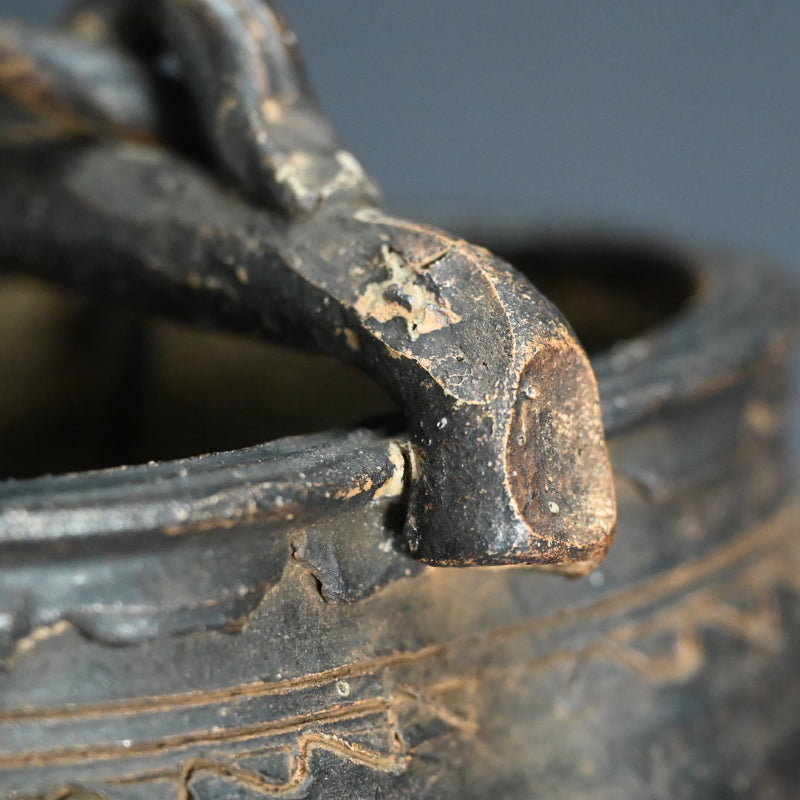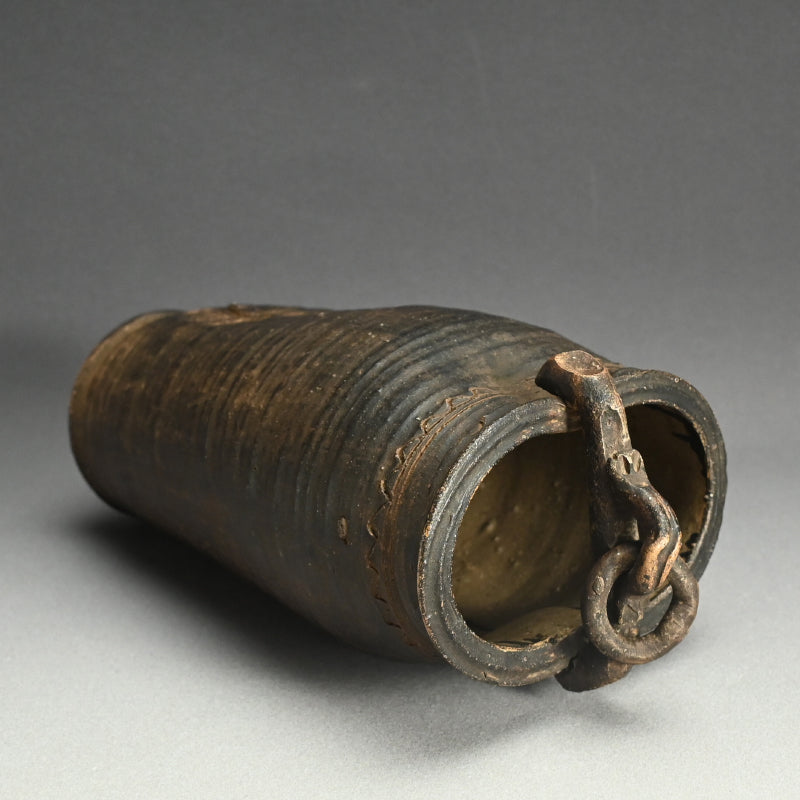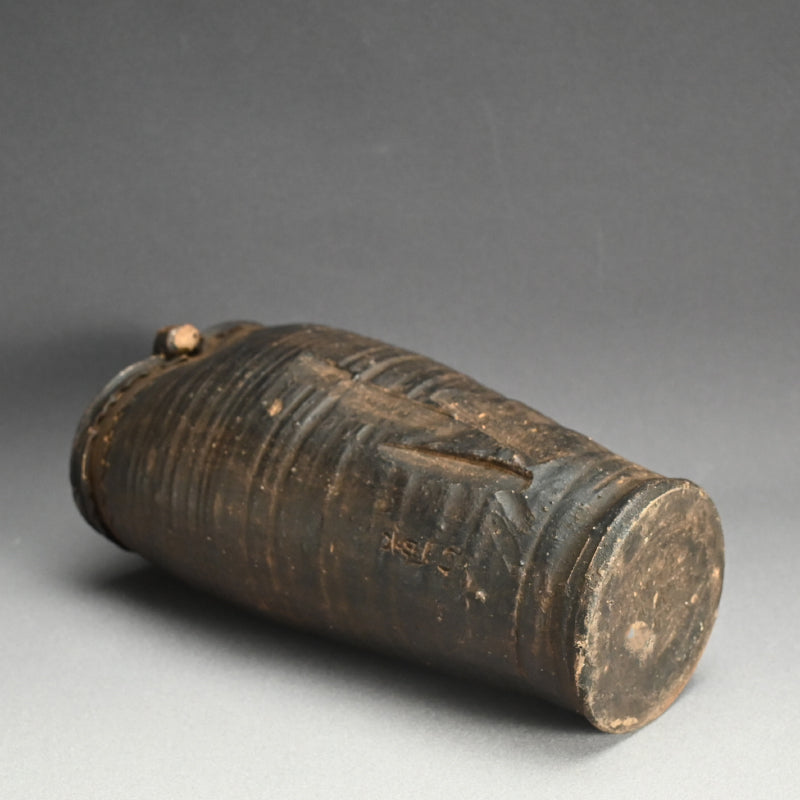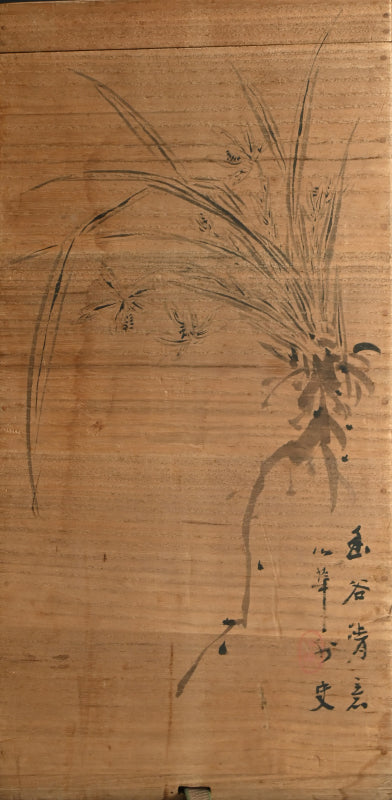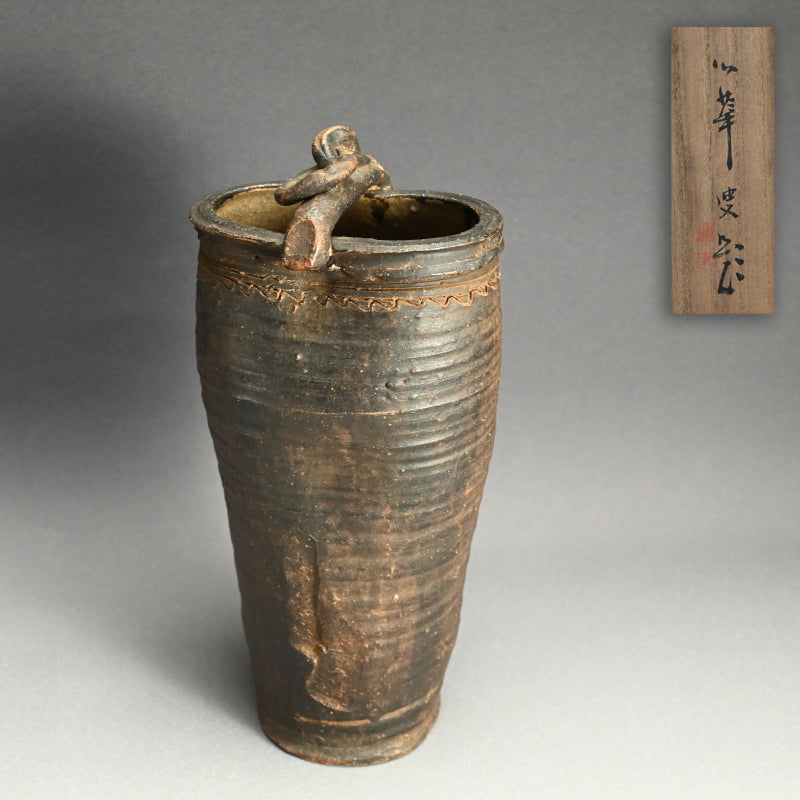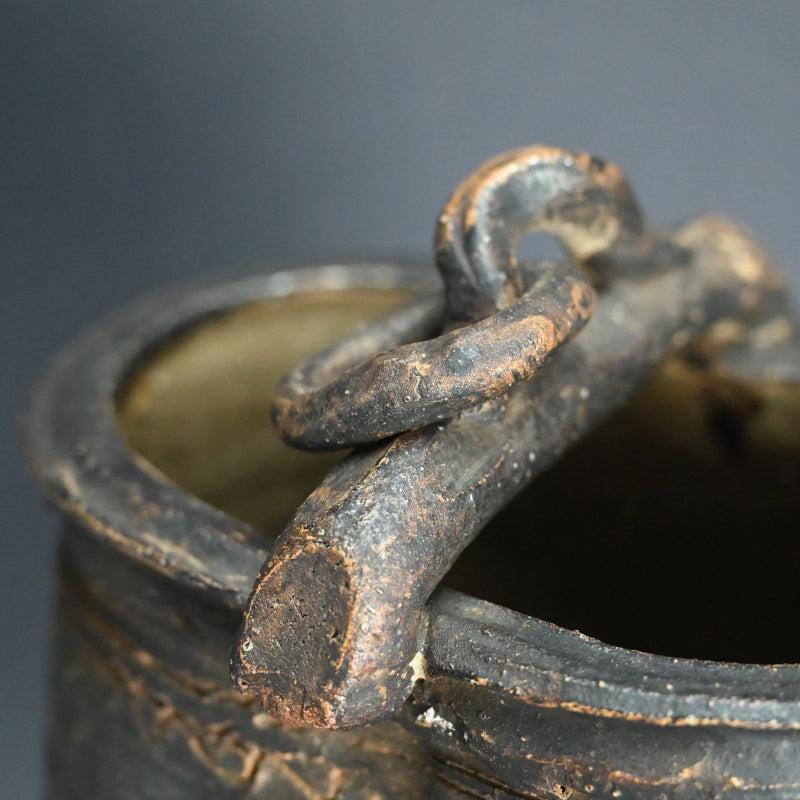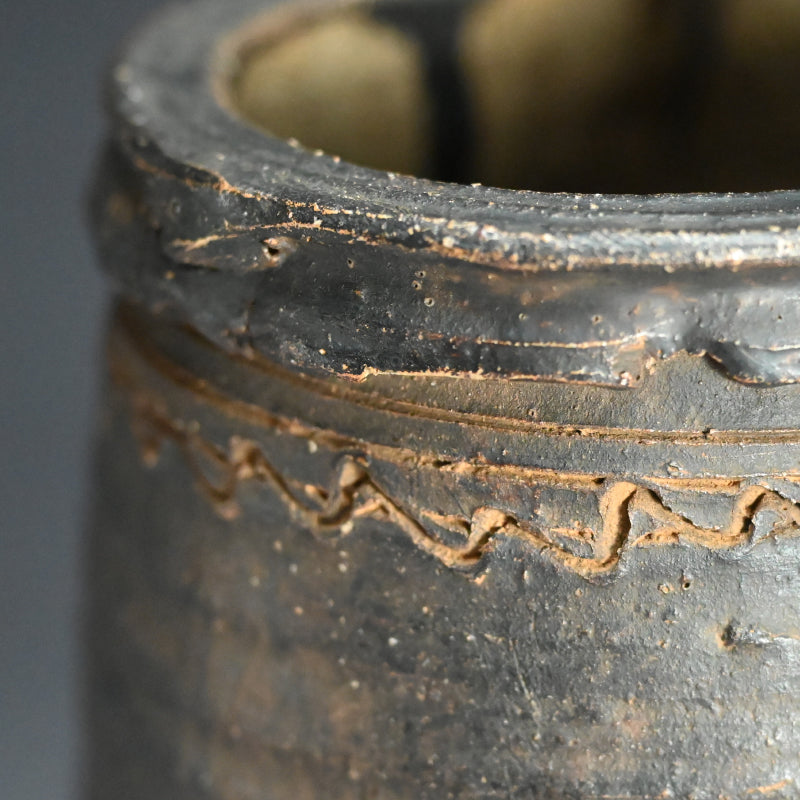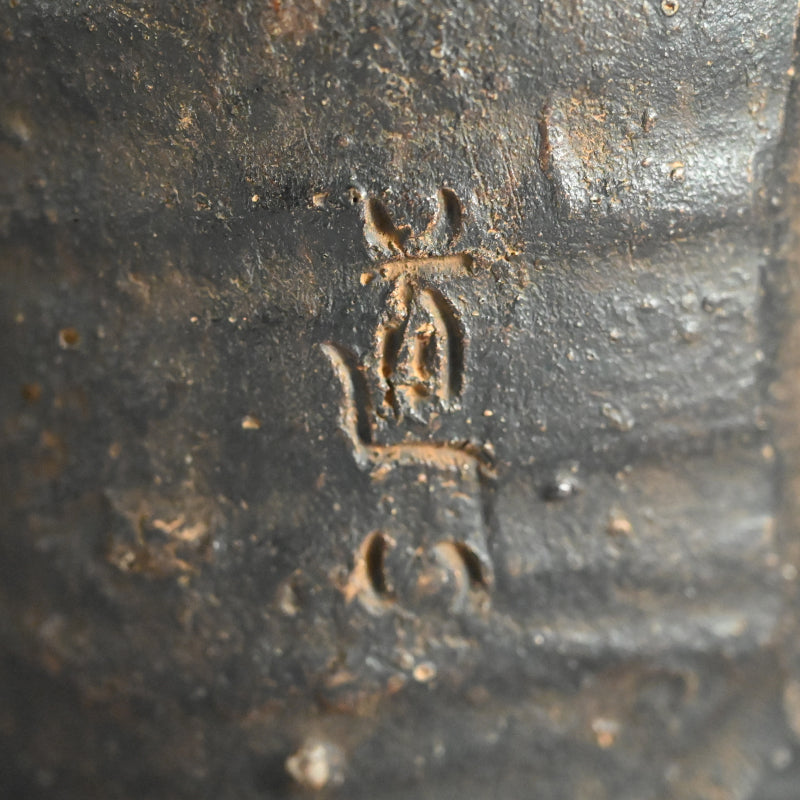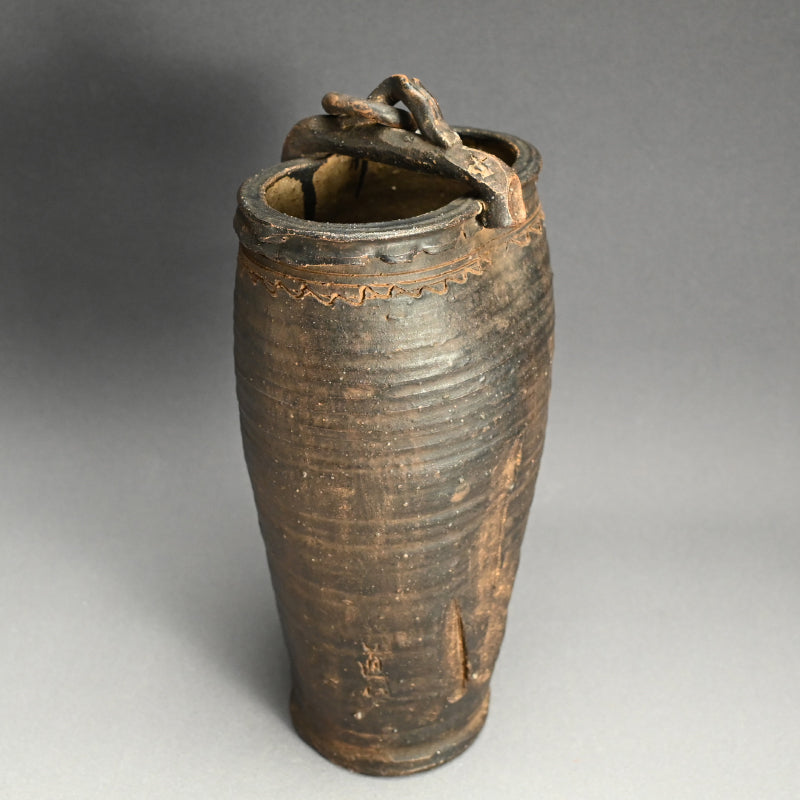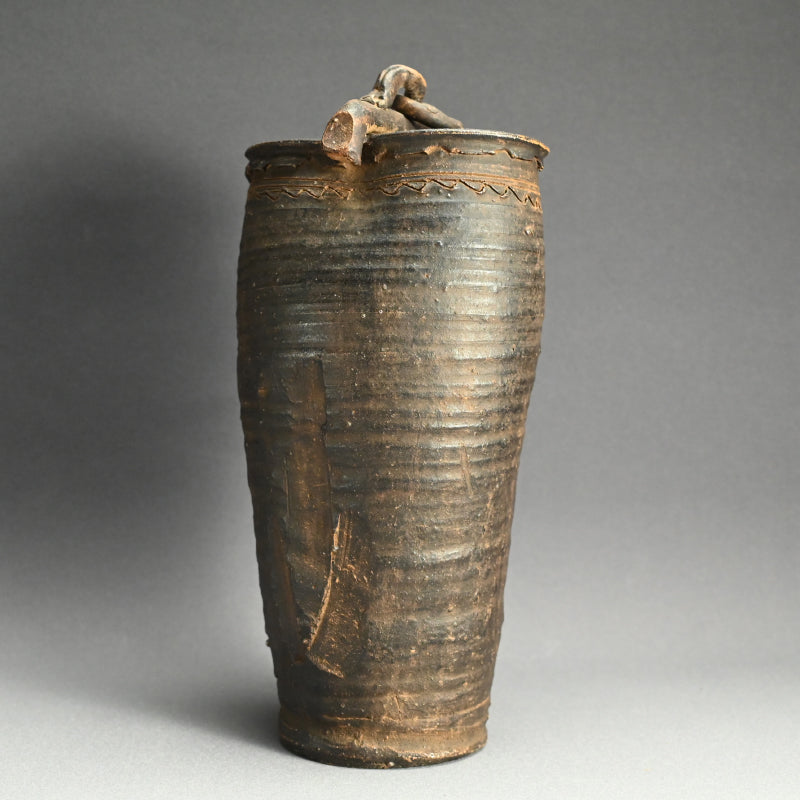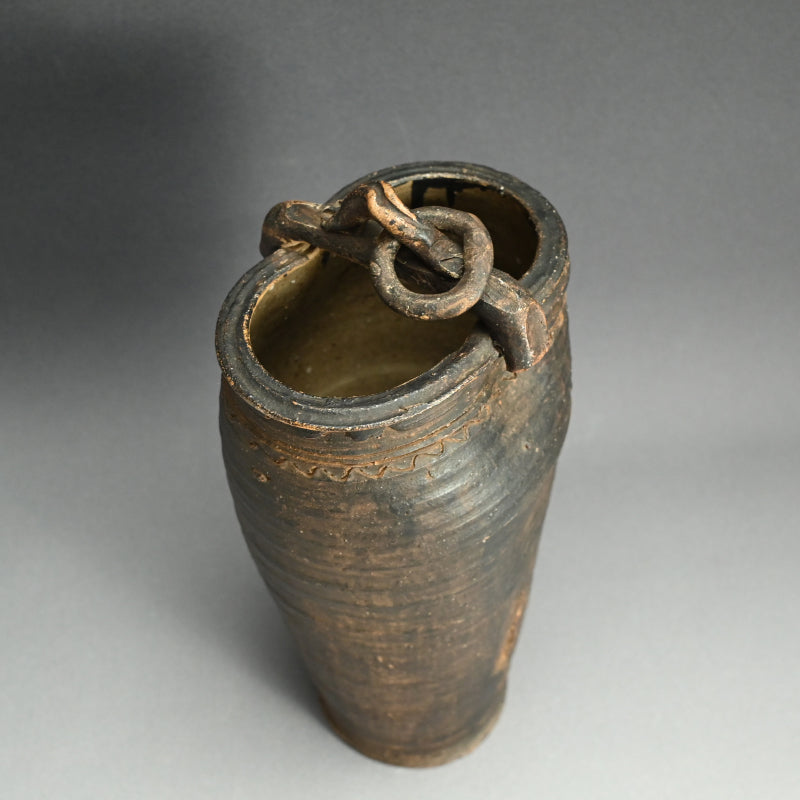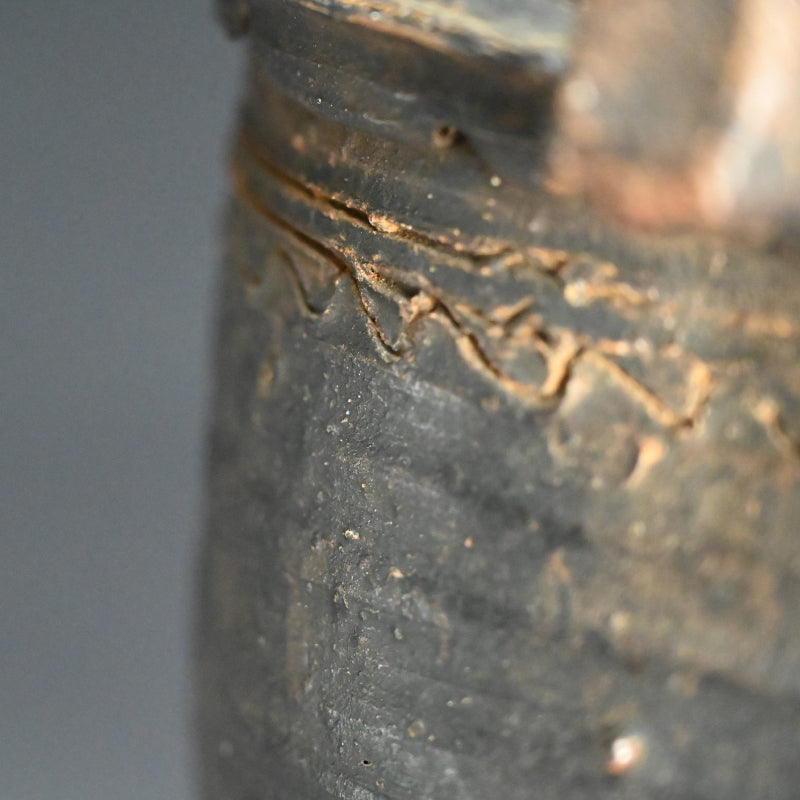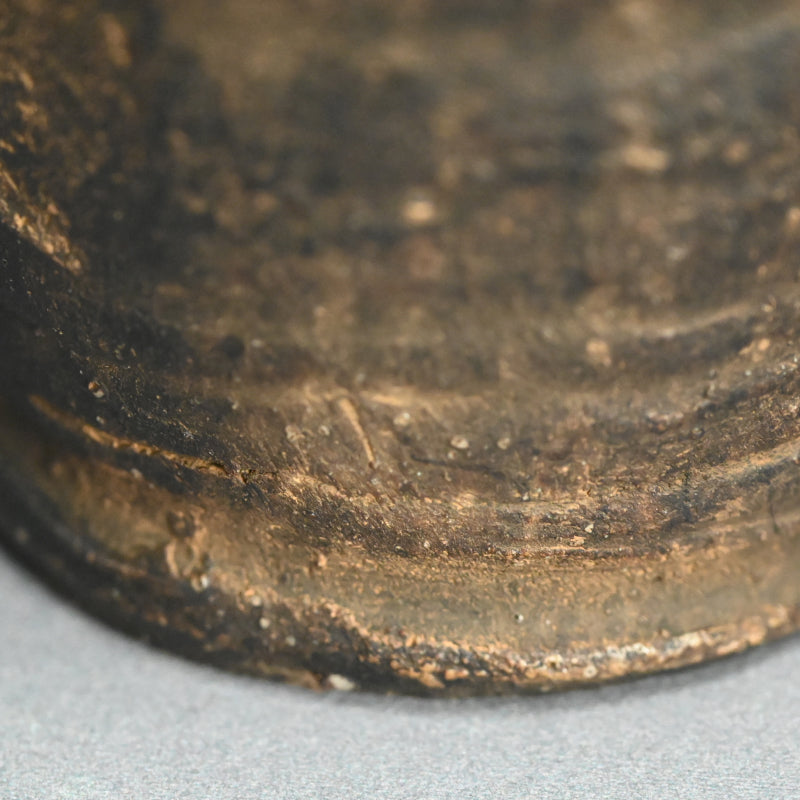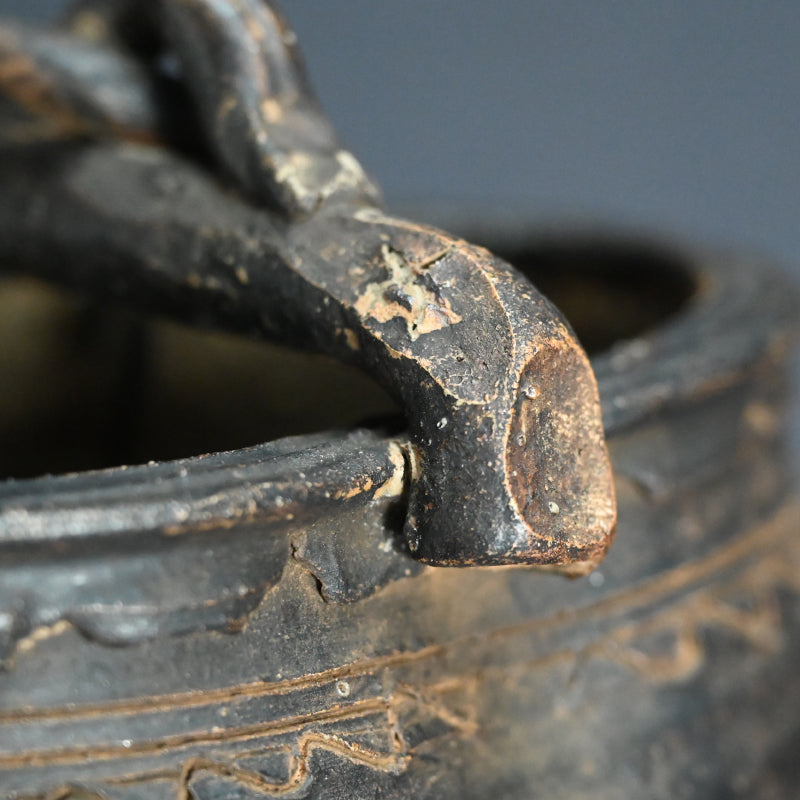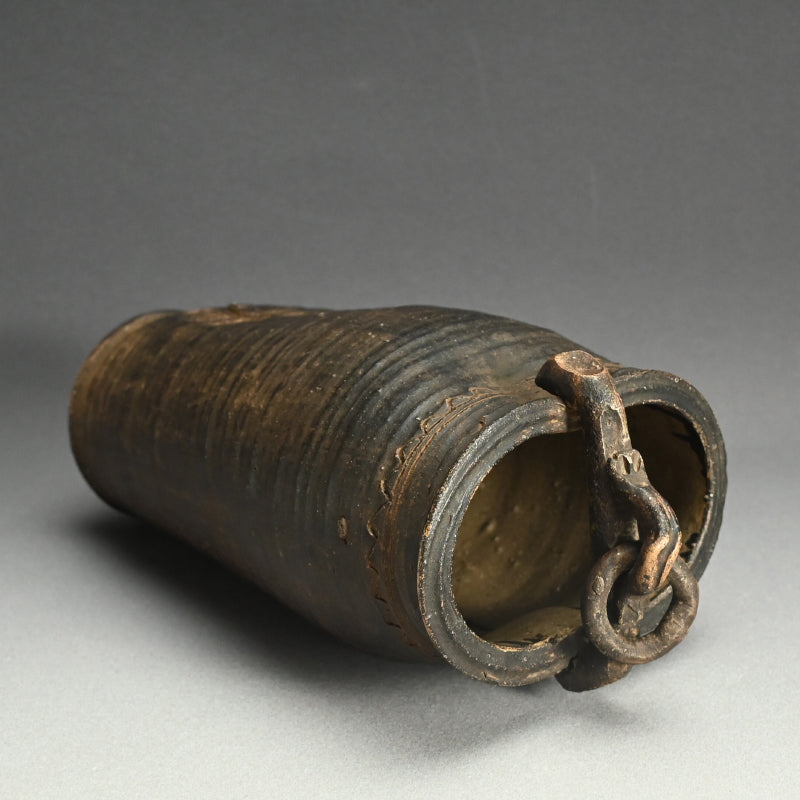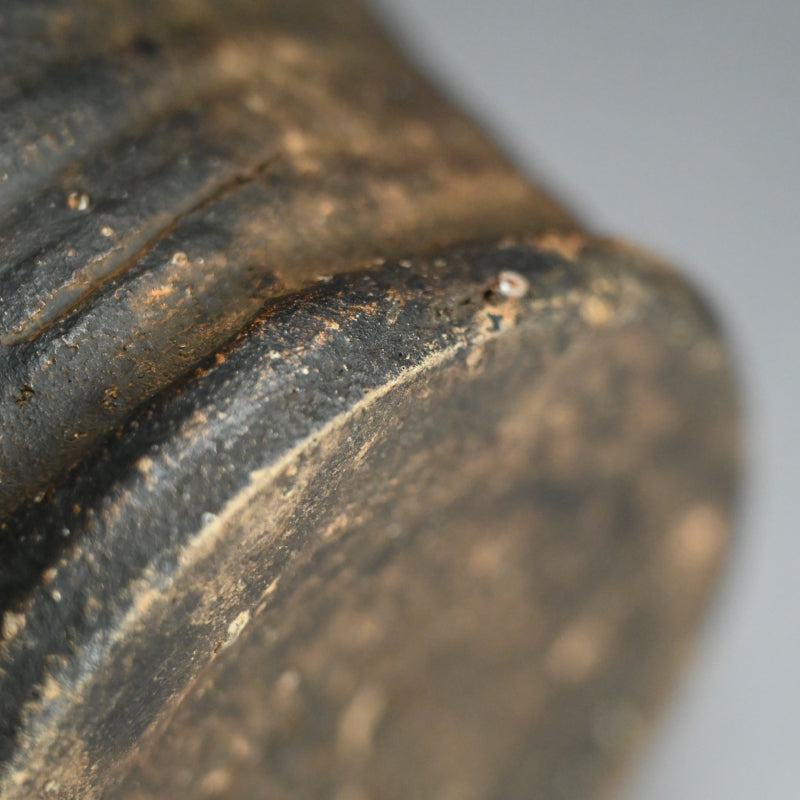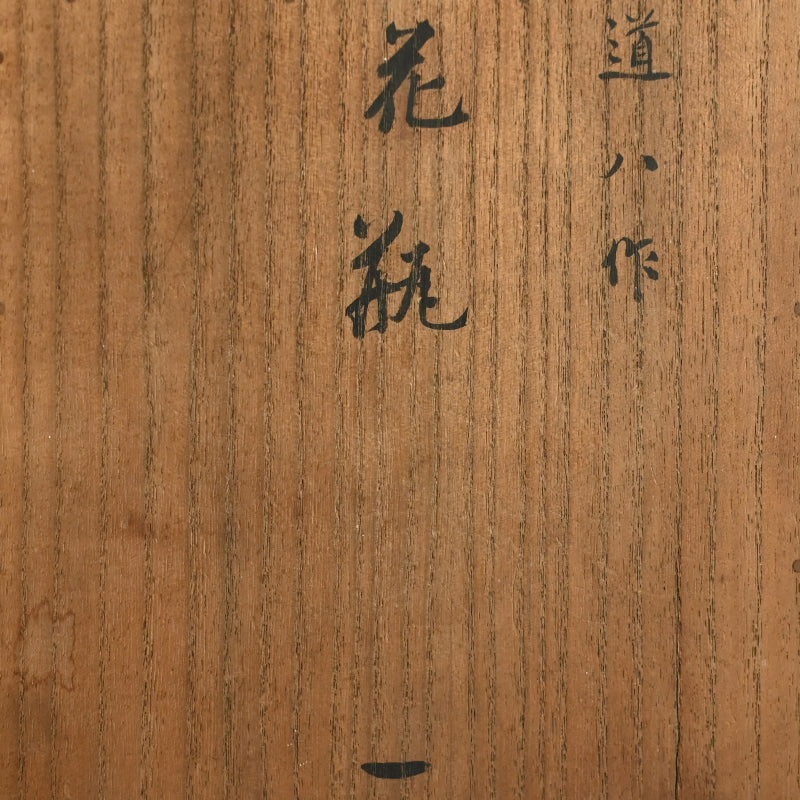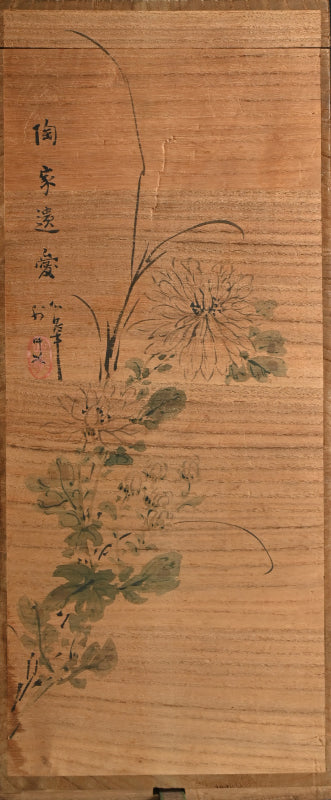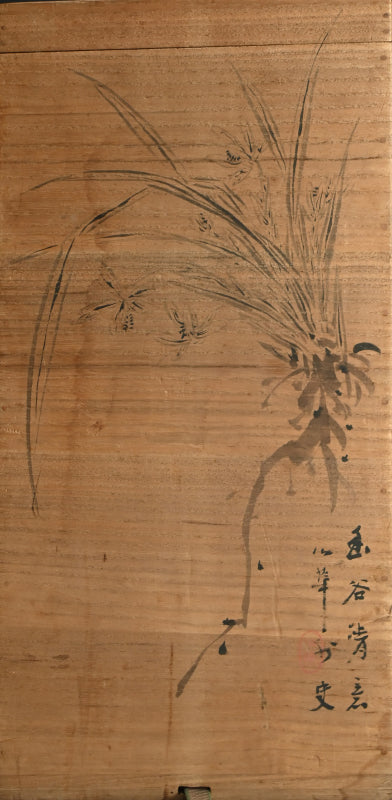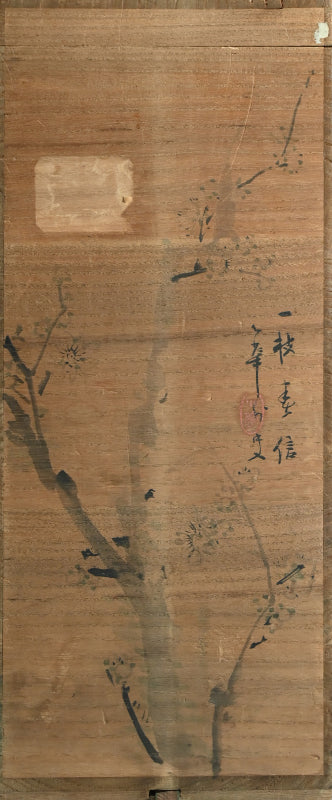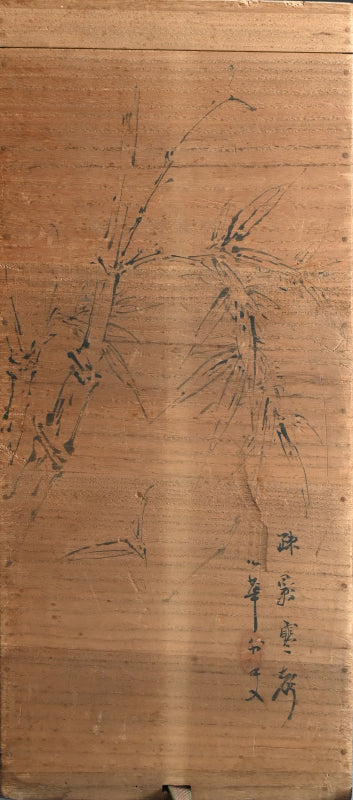1
/
of
20
Nanban Vase ー仁阿弥 道八 "南蛮花瓶"
Nanban Vase ー仁阿弥 道八 "南蛮花瓶"
Item Code: K353
Regular price
¥126,200 JPY
Regular price
Sale price
¥126,200 JPY
Unit price
/
per
Tax included.
Couldn't load pickup availability
An unglazed “Naban” or Southern style handled vessel by Ninnami Dohachi enclosed in a period wooden box painted on the sides by various artists with seasonal flora known as the Shikunshi, plum, orchid, bamboo and chrysanthemum. The vase is 16.5 x 19.5 x 38 cm (6-1/2 x 7-3/4 x 15 inches) and is in excellent condition. The history of Nanban ware in Japan is connected to the Nanban trade, which was a period of cultural and technological exchange between Japan and Europe. The Nanban trade began in the Sengoku period when Portuguese explorers, merchants, and missionaries established trade routes with Japan. The trade introduced Christianity, matchlock firearms, cannons, and galleon-style shipbuilding to Japan. Pottery was imported from the Philippines, South East Asia, Malaysia and Indonesia, and Taiwan. Lacquerware, Painting and pottery were all influenced by this trade. The term "Nanban art" refers to Japanese art influenced by contact with the Nanban, or "Southern barbarians". This art includes Pottery made in Japan that imitated Nanban containers in such places as Bizen and Ryukyuan Islands, as well as Naeshirogawa ware of Satsuma and Shodai-yaki ware of Kumamoto.
The Dohachi Kiln was established in Awataguchi by a retainer of Kameyama fief, Takahashi Dohachi I around 1760, and the name Dohachi was brought to the forefront of porcelain and ceramic production by the second generation head of the family who attained an imperial following, and grew to be one of the most famous potters of the Later Edo period to come from Kyoto. Ninnami Dohachi (1783-1855) was born the second son of Takahashi Dohachi I. Following the early death of his older brother he succeeded the family name, opening a kiln in the Gojo-zaka area of Kyoto (at the foot of Kiyomizu temple) in 1814. Well known for research into and perfection of ancient Chinese and Korean forms long held in high esteem in Japan, and at the same time working to expand the family reputation within tea circles. Along with contemporaries Aoki Mokubei and Eiraku Hozen became well known as a master of porcelain as well as Kenzan and Ninsei ware. Over the following decades he would be called to Takamatsu, Satsuma, Kishu and other areas to consult and establish kilns for the Daimyo and Tokugawa families as well as Nishi-Honganji Temple. Ninnami Dohachi II and his son (the future Dohachi III) were invited by the local lord Matsudaira to produce pottery at the Sangama kiln in Sanuki Kuni on the island of Shikoku in 1832. He would return later, agan with his son as well as his apprentice Siefu Yohei, in 1852. The third generation (1811-1879) continued the work of his father, producing an abundance of Sencha tea ware and other porcelain forms, maintaining the highest of standards and ensuring the family place in the annals of Kyoto ceramics well into the Meiji period. Takahashi Dohachi III began to use the title Kachutei Dohachi and was granted the title Hokyo by Ninaji-miya of the Imperial family. He retired to his grandfathers kiln in his later years, giving control to his son the fourth generation Dohachi (1845-1897) who also used the title Kachutei. The fifth generation (1869-1914) was adopted into the family and took head of the kiln in 1897 and was one of the top rated potters of his time, heavily influencing following generations including one of his top students, Ito Tozan. The kiln continues today with the 9th generation. The importance of the Dohachi workshop may be determined by the pair of vases held by the V&A (London) purchased in the 1870s under the orders: that they should 'make an historical collection of porcelain and pottery from the earliest period until the present time, to be formed in such a way as to give fully the history of the art. An exhibition was held at the Suntory Museum in 2014 centering on this artist, and he is also held in the Museum of Fine Arts, Boston and Kyoto National Museum among many, many others.
The Dohachi Kiln was established in Awataguchi by a retainer of Kameyama fief, Takahashi Dohachi I around 1760, and the name Dohachi was brought to the forefront of porcelain and ceramic production by the second generation head of the family who attained an imperial following, and grew to be one of the most famous potters of the Later Edo period to come from Kyoto. Ninnami Dohachi (1783-1855) was born the second son of Takahashi Dohachi I. Following the early death of his older brother he succeeded the family name, opening a kiln in the Gojo-zaka area of Kyoto (at the foot of Kiyomizu temple) in 1814. Well known for research into and perfection of ancient Chinese and Korean forms long held in high esteem in Japan, and at the same time working to expand the family reputation within tea circles. Along with contemporaries Aoki Mokubei and Eiraku Hozen became well known as a master of porcelain as well as Kenzan and Ninsei ware. Over the following decades he would be called to Takamatsu, Satsuma, Kishu and other areas to consult and establish kilns for the Daimyo and Tokugawa families as well as Nishi-Honganji Temple. Ninnami Dohachi II and his son (the future Dohachi III) were invited by the local lord Matsudaira to produce pottery at the Sangama kiln in Sanuki Kuni on the island of Shikoku in 1832. He would return later, agan with his son as well as his apprentice Siefu Yohei, in 1852. The third generation (1811-1879) continued the work of his father, producing an abundance of Sencha tea ware and other porcelain forms, maintaining the highest of standards and ensuring the family place in the annals of Kyoto ceramics well into the Meiji period. Takahashi Dohachi III began to use the title Kachutei Dohachi and was granted the title Hokyo by Ninaji-miya of the Imperial family. He retired to his grandfathers kiln in his later years, giving control to his son the fourth generation Dohachi (1845-1897) who also used the title Kachutei. The fifth generation (1869-1914) was adopted into the family and took head of the kiln in 1897 and was one of the top rated potters of his time, heavily influencing following generations including one of his top students, Ito Tozan. The kiln continues today with the 9th generation. The importance of the Dohachi workshop may be determined by the pair of vases held by the V&A (London) purchased in the 1870s under the orders: that they should 'make an historical collection of porcelain and pottery from the earliest period until the present time, to be formed in such a way as to give fully the history of the art. An exhibition was held at the Suntory Museum in 2014 centering on this artist, and he is also held in the Museum of Fine Arts, Boston and Kyoto National Museum among many, many others.
Share









